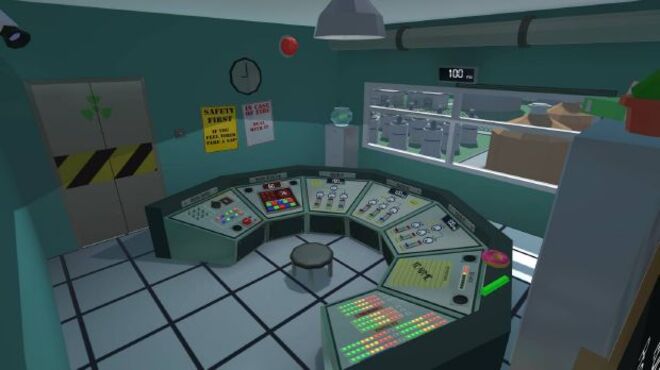
Volatile radioactive isotopes may also be released from the core, including those of iodine and the noble gases. If the reactor self-destructs, radioactive solids and gases could be released into the environment. In the most dangerous situation, a fire, coolant failure, control rod failure, or sabotage could allow a reactor to overheat and melt.

Figure 109-1 shows a schematic of a typical nuclear power plant. The risk for radiation leak and exposure exists at many points. nuclear reactors have been cited numerous times in the media as potential targets for terrorist attacks. A catastrophic meltdown would pose many threats, ranging from various kinds of radiation escaping into the atmosphere to more conventional dangers, such as steam and fire. 1, 1a Nuclear power plants have the unlikely, but real, potential to cause massive disasters, both through accidents and terrorist events. Nuclear power plants provided about 11 percent of the world’s electricity production in 2012, down from about 14% in 2009. power is nuclear generated, the French create about 75% of their energy by the nuclear route.

Nuclear power plants provide energy to many areas of the globe. William Porcaro, in Ciottone's Disaster Medicine (Second Edition), 2016 Description of event Furthermore, material and system maintenance costs for CSP systems based on solid heat storage materials can be reduced significantly. Solid heat storage materials are used as storage media at higher operating temperatures to improve the efficiency, such as concretes in the Zhangbei 50 MW CSG Fresnel CSP project (China), rocks in the Ait-baha Pilot Plant (Morocco) and ceramics in the Julich Solar Tower (Germany) ( Medrano et al., 2010 Achkari and El Fadar, 2020). Higher operating temperatures can improve CSP system efficiency, but the operating temperature for molten salts is limited to about 550 ☌. In such thermocline storage, low-cost solid storage materials, such as sands and rocks, can be placed in order to replace most molten salts and reduce the cost further. In order to reduce the initial cost, one-tank thermocline storage is proposed.

Electrical heaters are usually immersed in the cold tank to avoid solidification. In the two-tank configuration, cold molten salts are pumped from a cold tank to a hot tank during heat charging, while during heat discharging, reverse HTF flow occurs for the utilization of stored thermal energy. The representative plants include Solar Two (USA), CESA (Spain) and THEMIS (France) where two-tank configuration is deployed, as illustrated in Fig. Later, molten salts were developed for wider operating temperature ranges and lower costs, which made them the most widely used storage media for existing CSP plants and those under construction ( Achkari and El Fadar, 2020).

The early projects, including SSPS DCS (Spain), Solar One (USA), SEGS I/II (USA) and SSPS DCS (USA), all adopted mineral oil in the TES system, but the high cost and limited operating temperature range of thermal oil made the project unprofitable. Renewable and Sustainable Energy Reviews 79: 82-100.Īt the early stage of CSP technologies, thermal oil was used as storage media. Modified from Pelay U, Luo L, Fan Y, Stitou D and Rood M (2017) Thermal energy storage systems for concentrated solar power plants. Four main configurations of CSP plants with TES are illustrated in Fig. Currently, high-temperature sensible heat storage is the most mature TES technology for CSP plants. Since solar radiation is intermittent and unstable, TES systems are introduced into CSP plants to improve energy dispatch ability and system stability. Accordingly, their concentration ratio, operating temperature and other properties vary with each other. Generally, CSP systems are classified into four types according to solar radiation concentrating methods: solar power tower, parabolic trough collector, linear Fresnel reflector and parabolic dish systems, among which the first two are the most widely adopted ones ( Tian and Zhao, 2013). CSP plants are used to convert solar energy to electricity through conventional thermodynamic cycles (i.e., Rankine cycle), and have broad prospects due to their low cost, high efficiency and good scale-up potential, including distributed, lower-concentration applications ( Markides, 2015 Dirker et al., 2019).


 0 kommentar(er)
0 kommentar(er)
